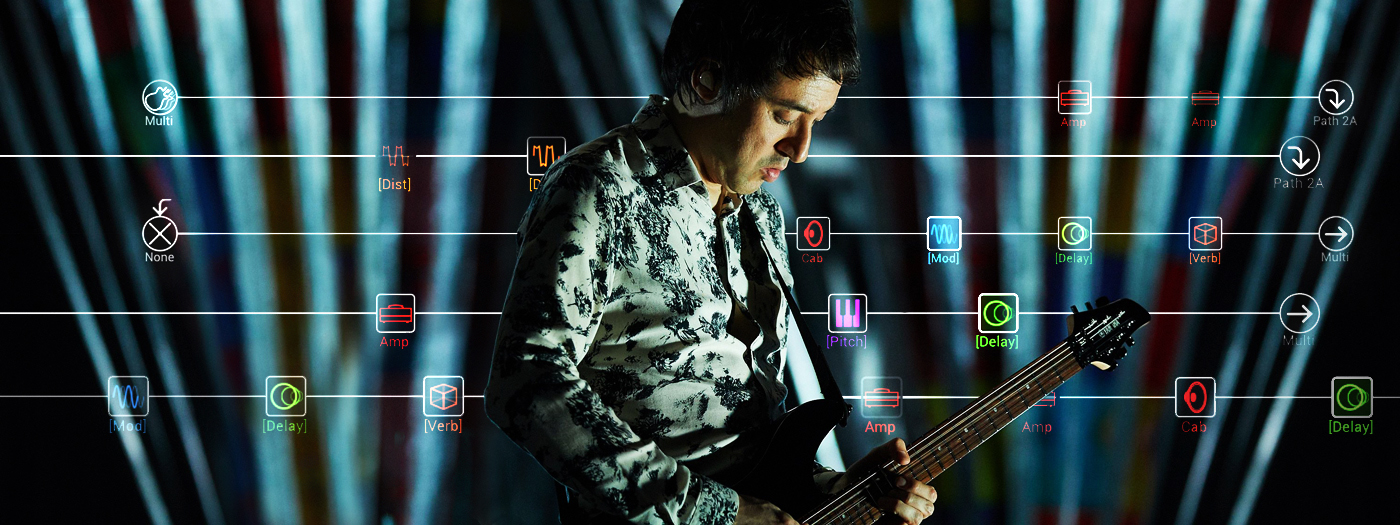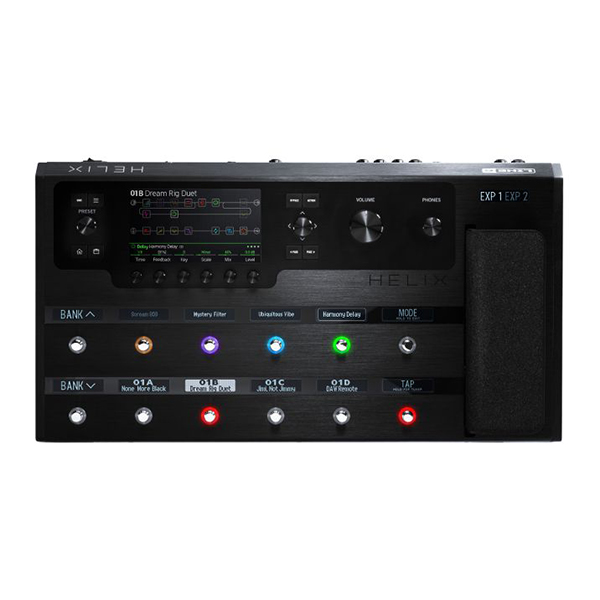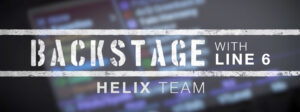Jeff Schroeder: When I Dream of Amps …
by Jeff Schroeder
My therapist recently asked me if I ever dream. I think she was quite surprised when I told her that the majority of my dreams were about all the different types of amps I could create with my Line 6 Helix. I described to her how some of the amps in my dreams were very realistic and close to things I’ve used in the real world while others were just strange enough that no company in its right mind would ever make such things. They would most likely only exist in the realm of digital modeling. I explained to her how I took what I saw in these dreams, created the amps with Helix, and used them as creative tools when writing guitar parts for the Smashing Pumpkins, Night Dreamer, or my solo music.
While the first part of the above paragraph may or may not be true, the latter half is a creative technique that I’ve been using while writing material for a solo album I’ve begun working on during quarantine. One day I was thinking about all the different types of multi-channel amplifier heads that exist in the current marketplace. When I first joined the Smashing Pumpkins in 2007, I used a few different types of multi-channel heads before settling on a heavily modified Randall MTS module-based system. In fact, it’s what both Billy Corgan and I still use today in our live guitar rigs (along with Helix for all our effects). When working in my home studio, however, I prefer the flexibility that Helix provides and very rarely use traditional amps.
Over the past few weeks, I started assembling these “dream amps” so I would have lots of different choices at my disposal when writing parts over an already existing track or as a way to put my mind and ears in a different creative space when writing new material. In a platform that can be overwhelming with what feels like unlimited choices, placing certain restrictions and limitations can actually be a fruitful way to spark different types of ideas when creating presets for Helix. For these amps, I made them all three- or four-channel amps that share a single speaker cabinet. Besides overdrives and distortions, I allowed each amp to have two built-in effects, which unlike most—but certainly not all—of their tube counterparts are slightly less traditional: pitch shifters, stereo delays, and modulated reverbs galore!

The first amp, “Clean Scream,” is actually something very close to what I would use live for a Smashing Pumpkins gig and I use this preset quite a bit when working out guitar parts for our albums. One of the benefits of using a shared speaker cabinet is that it helps the three “channels” work harmoniously together EQ-wise. When using multiple amps and speaker configurations within a song, it can often be tricky to get the different tones sit together within the mix.

The second amp, “Dreamscape,” is something I turn to when creating more textual or shoegaze-inspired guitar parts. I made this using three types of cleans sounds: solid-state, British, and American voiced. Besides healthy doses of delay and reverb, I added one extra effect to my built-in effect rule because the Roland JC-120-inspired amp should always have a built-in chorus. In lieu of distortion sounds, I used the new Poly Sustain delay. I placed it on a momentary switch rather than a latching one. Try holding both single notes and chords with the Poly Sustain while layering lines and melodies over the top.

One of my favorite all-time guitar records is Joe Satriani’s Not of this Earth. “Boss Head” is inspired by some of the sounds and textures found on that record and its follow-up, Surfing with the Alien. This preset will take you all the way back to the ’80s when tons of bands were running Boss pedals into a Roland JC-120 amp. In fact, for a long time in my shoegaze days, I used a JC-120 head into a 4×12 cabinet with some very good results. For this head, I thought it would be cool if each of the three drive channels had a Boss pedal built into it. In addition to the straight clean channel, you’ll find three different types of gain channels here that range from Cure-y post-punk to the William Gibson-inspired cyber-rock-metal guitar sounds of early Satriani. These sounds can be a bit metallic and abrasive, but that is also their secret charm.

The final amp in this post is a three-channel fuzz amp I call the “Fuzzland.” A few years ago, my bandmate, Billy Corgan, had a preamp module made to replicate the sound of his vintage Vampower head. One modification he had to the preamp was adding a Baldwin-Burns Buzzaround fuzz at the beginning of the circuit. This made me think about how cool it would be to have a head that had three fuzz-based channels. My choices were the new Bighorn Fuzz (which was actually modeled from my personal ’73 Big Muff), the Industrial Fuzz, and the Wringer Fuzz. For effects, I used a pitch shifter and the Elephant Man delay. The sounds found here are where fuzz and synth sounds meet. For the past few years I haven’t used fuzz-based distortion as much as in the past. It’s been inspiring to return to the unique tonalities only found with fuzz-style clipping.
I hope these examples will inspire you to explore creating your own multi-channel dream amps.
Learn more about Helix.

Jeff Schroeder is a musician based in Los Angeles. He currently plays guitar in the Smashing Pumpkins and Night Dreamer. Besides guitar, Jeff is obsessed with coffee and 20th century experimental literature.
Main Photo: Travis Shinn
Related posts
By submitting your details you are giving Yamaha Guitar Group informed consent to send you a video series on the Line 6 HX Stomp. We will only send you relevant information. We will never sell your information to any third parties. You can, of course, unsubscribe at any time. View our full privacy policy






Leave a Reply
You must be logged in to post a comment.